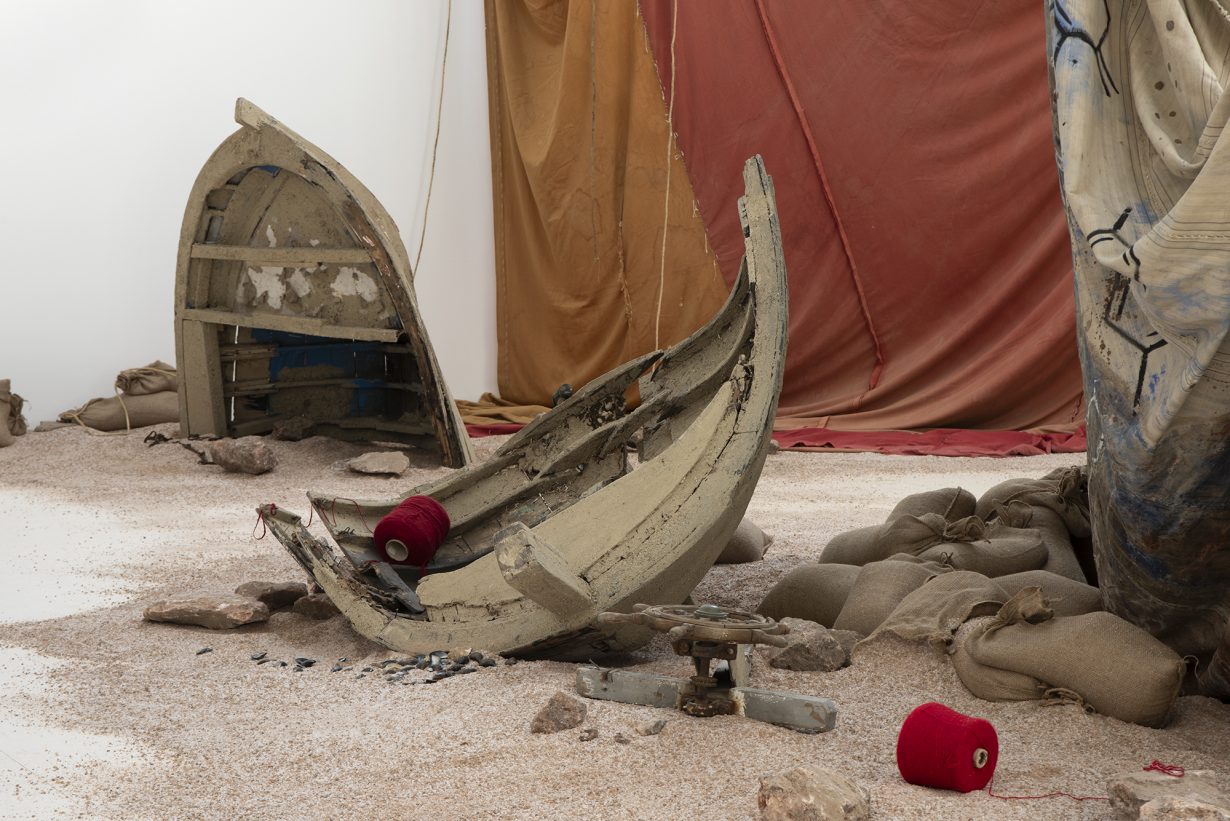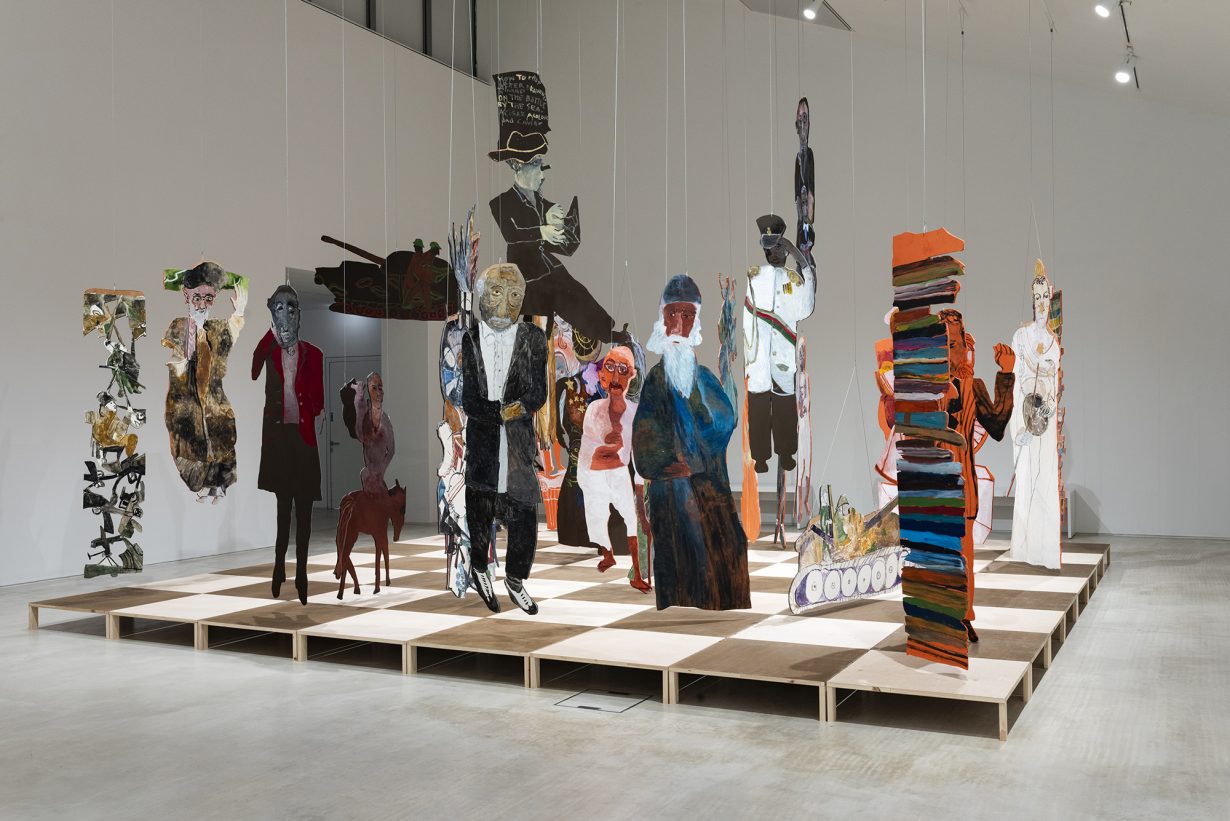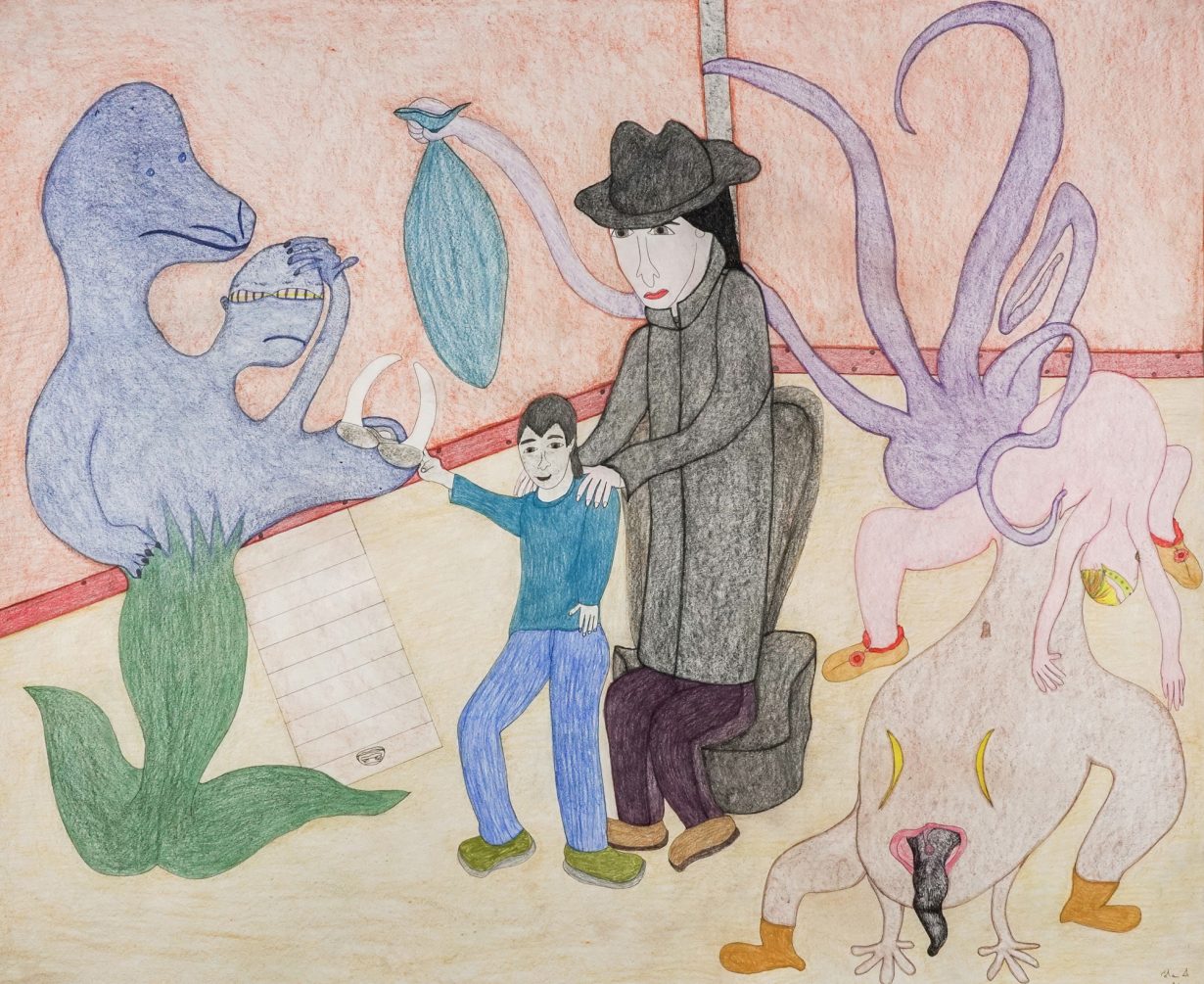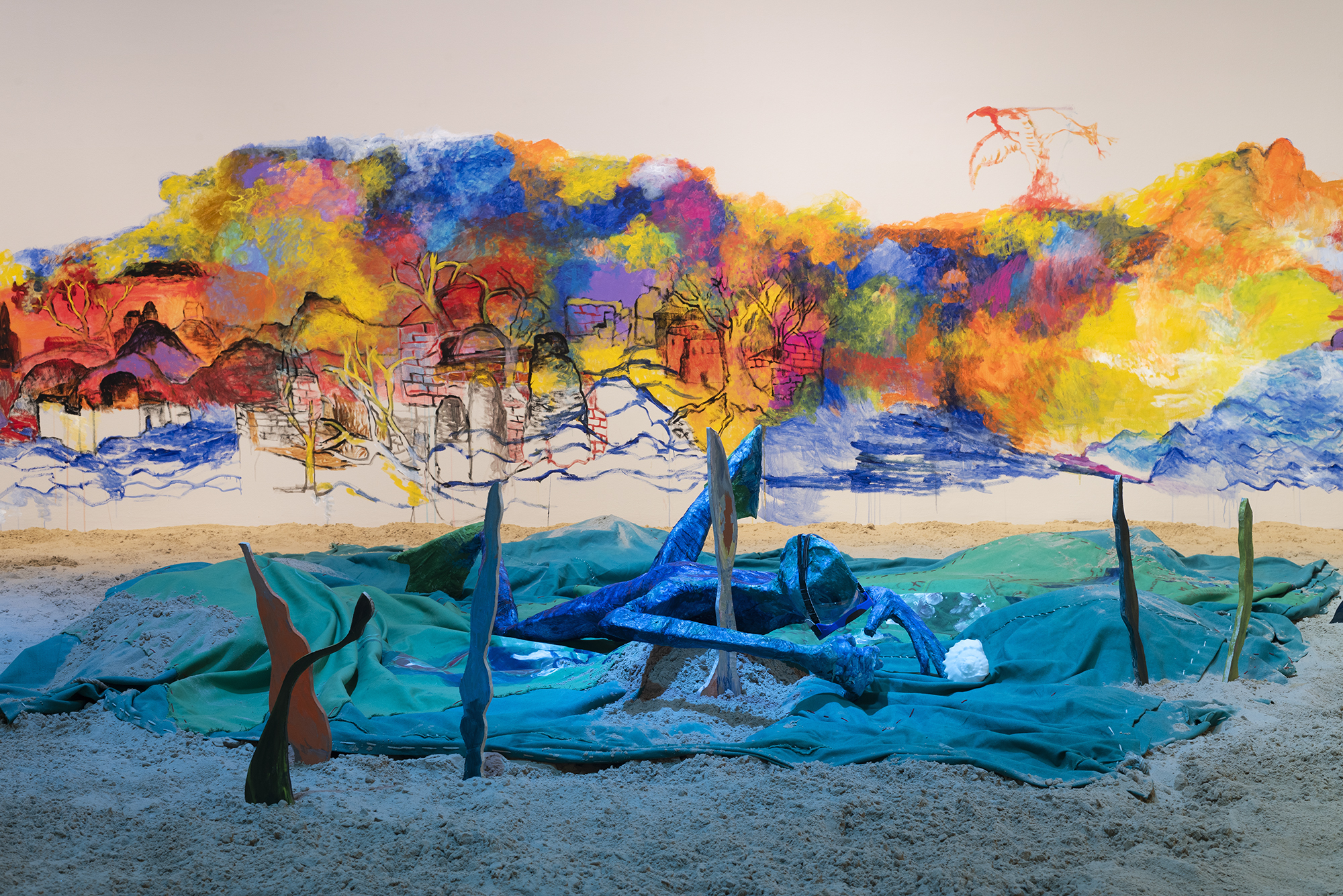From performative trade wars to ‘small boats’ dog-whistling, the seas have become a key political battleground in the UK
‘Who has known the ocean?’ asks the ecologist and writer Rachel Carson in the opening lines of her article ‘Undersea’ (1937). It is a provocation of sorts. Living near to the sea, in Norfolk, I think about it almost daily but cannot say that I know it. That it is ‘an unknowable and formidable entity is a cliché of the popular… imaginary’, write art historians Pandora Syperek and Sarah Wade in an essay accompanying their exhibition Sea Inside at Sainsbury Centre for Visual Arts in Norwich. How much has art and literature played into this truism? The sea has offered boundless inspiration for visual artists and writers alike: venerated through Ancient Greek gods like Poseidon, anthropomorphised by Romantic poets like John Keats, pathologised in Herman Melville’s Moby-Dick (1851), exoticised by the likes of Paul Gaugin. Unlike these versions of the sea – sensationalised, aggrandised or turned into myth – a number of recent group exhibitions in the UK seek to bring it to more familiar territory: they turn what is mysterious and unknown about the ocean into a mirror for human relations.
The seas and oceans are integral to the global movement of goods, people and ideas. From my vantage point by England’s coastline, I am inclined to view oceanic exhibitions through the current political moment and my own surroundings: specifically the kinds of anti-immigrant, ‘small boats’ politics encouraged by the UK’s nationalist party Reform UK in coastal regions and by Prime Minister Keir Starmer’s rhetoric of ‘an island of strangers’, a phrase he coined earlier this year to demonstrate the ‘dangers’ of more welcoming immigration policies. By ‘stranger’ Starmer means something – or someone – unfamiliar, perhaps then also unsovereign. By turning the social plurality of this island nation into something to fear, the sea (as route or passage) becomes implicated in this fear.

At Turner Contemporary in Margate, Egypt-born Armenian artist Anna Boghiguian challenges a fear of the unknown through her own playful, crudely painted visual language. Located in an English coastal town two hours by train from London, the gallery, since opening in 2011, has driven rapid gentrification within a seaside resort that remains economically and socially deprived, creating a divided town of two halves, while the Reform party won a seat there in the May local elections. In The Sunken Boat: A glimpse into past histories, the artist’s works speaks to colonial narratives, maritime history and stories of migration as a means of approaching the sea as something acutely subjective and connected to stories of humanity.
Extending across three rooms of the gallery (rooms that look directly out onto the ‘English’ Channel), the exhibition begins with Boghiguian’s 2015 installation The Salt Traders. Consisting of piles of salt and painted canvas sails that scale the height of the room, and featuring a map of the world upon which historic salt-trading routes are combined with hexagonal patterns (symbolising the chemical structure of salt), it conjures the olfactory and material value of salt as traced over time. This leads to Boghiguian’s motley cast of distinctive painted khadi-card-cutout world leaders, revolutionaries, dictators, monarchs and philosophers. In The Square, the Line and the Ruler. Ambiguous Philosophers / Ambiguous Politicians (2019), Yasser Arafat, Queen Victoria, Churchill and Pythagoras are suspended above a lifesize chess board in this enormous game of power, each one accompanied by a short wall text describing their place in the world. In the chess board of The Square…,as in the torn sails and piles of salt in The Salt Traders, Boghiguian renders historical movements of goods, and the political movements of people, in her knowingly naive, satirical style, reminding us that there will always be opposing versions, revisions and omittances in the telling of history.

The exhibition ends with a story that drifts between reality and fiction. In a new room-size sculptural installation, The Sunken Boat (2025), the accompanying text recounts the story of a slave ship named The Lottery that sank off the coast of somewhere unnamed. Though in reality, that ship, which left Liverpool in 1796 bound for the Caribbean, never actually sank. Despite the grave connection to human slavery, Boghiguian’s three-dimensional seascape is whimsical and fantastical. The foreground comprises a sand-covered floor replete with papier-mâché fish in vivid colours and snorkelling tuxedo-clad politicians in cutout form, while the back wall is a mural of a shoreline. From where we’re standing, with the sand and shoreline ahead, it is as if we are in the sea, looking back to land. In a bric-a-brac of cultural vernaculars, Margate’s lighthouse is recognisable in the mural, alongside what look like northern African mosques and the occasional fishing boat, all interpolated into a fictional, colourful composition, but one that also incites a bigger picture. Boghiguian’s work speaks to the plurality of culture, approaching it in her own intuitive, unbound style that encourages us to do so too.
It is curious, and perhaps also crude, to title the show The Sunken Boat while neglecting any direct association with the perilous crossings people make by small boats to these shores each day. Boats that, like the slave ships condemned to history, carry the cruel realities of structural oppression. But Boghiguian’s work – wry, elliptical, intertextual – does something far less literal: the boat operates as a metaphor for human and ecological crisis, and for the ways in which ‘history repeats itself’ across place and time, as the artist says in an accompanying text. On the surface, the ‘institutional’ proposition of exhibitions like Boghiguian’s is to demonstrate the ways in which the sea has been exploited and made complicit in environmental crisis, neocolonialism and capitalist extraction. These are enormous and complicated subjects, and towards which one approach might be to reconcile with not knowing someone or something; where not knowing might also equate to accepting difference.

In Sea Inside at the Sainsbury Centre, artists including Harun Morrison, Gabriella Hirst, Heidi Bucher, Marcus Coates, Evan Ifekoya and Laure Prouvost turn from ‘the expanse of open seas to its more intimate spaces’, as Syperek and Wade write in an accompanying text. In her 1972 videowork Bodyshells, members of Bucher’s family dance slowly on Venice Beach in costumes made of synthetic foam and iridescent paint that emulate the fluted forms of seashells, the kind one might find on that beach, as well as the decorative porcelain of domestic spaces: becoming at once strange and familiar. Inuk artist Shuvinai Ashoona’s largescale crayon drawing Composition (At the Dentist) (2022) renders indiscernible, genderless and tentacular lifeforms – part marine animal, part human – as the unfamiliar cast of a dentist’s waiting room. These artists take the ocean’s viscosity, slipperiness and fluidity and map these same qualities onto the politics of identity: rather than asking how the sea might relate to us, which is the human-centric project of anthropomorphisation, they ask how it might shape us.

By centring the oceans and seas, these exhibitions reposition humans within what Donna Haraway refers to as ‘multi-species kinship’. In ‘Watery Gestations’, the final chapter of Sea Inside, the curators draw on the etymology of gestare in Latin, meaning ‘to carry’, linking it to the sea’s ability to carry a plurality of people, ideas and politics. As world leaders continue to choose warfare over welfare, they also erode any semblance of unity, and in doing so attempt to rewrite human history as culturally divided. Difference, however, does not equate to division. I am left with this image from Hydromancy – an evening event at the Sainsbury Centre– during which the artist Adam Christensen, wearing watery hued clothing and long slick-wet hair, made strange abstracted sounds with his voice and an accordion, the medley of notes produced sounding like sea shanties sinking beneath the waves. Performed outside under a midsummer night’s sky, each one of his guttural vocals extended and dissolved into the next.
The enormity of the ocean as something strange and unfamiliar becomes a mirror, but perhaps also a proposition: it teaches us that rather than fearing the waters and their conversant lifeforms, we have to learn to live with what we do not know. As for the ocean, so for humanity.
Rose Higham-Stainton is a critic, essayist and small-scale farmer based in Norfolk. Her first book is Limn the Distance (JOAN, 2023)
